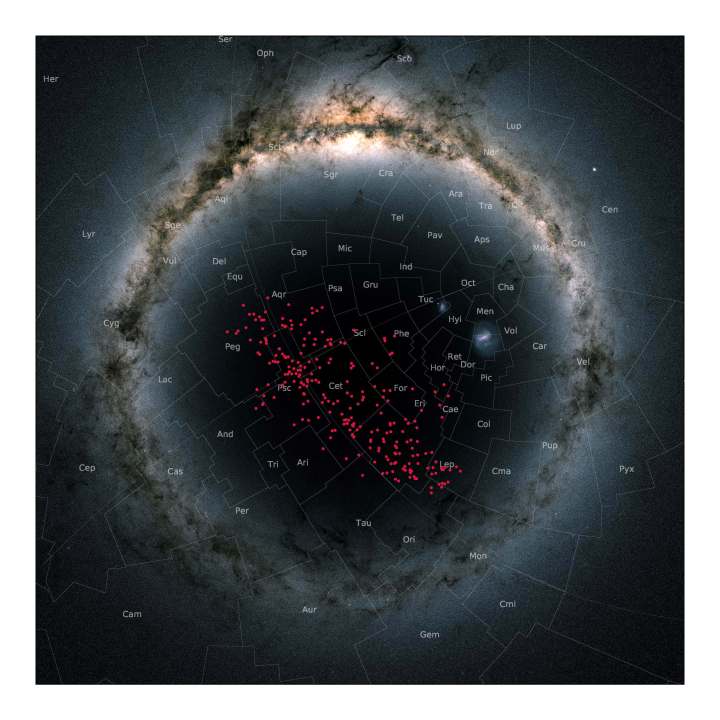
Astronomers from the University of Vienna have identified a river of stars flowing across our galaxy and covering most of the southern sky. The 4000 estimated stars that comprise the stream were born together and have been moving together for the last one billion years, making the river a rarity as most star clusters are quickly dispersed once they form.
Typically, when star clusters form they do not contain enough stars to create sufficient gravity to hold the cluster together, and gravitational forces quickly disperse the stars throughout the galaxy. But from observation of nearby space, astronomers have determined that there are a few clusters with enough mass to remain bound together for millions of years. The team from Vienna were able to identify such a cluster relatively nearby within the Milky Way, and map it using the European Space Agency satellite Gaia.
“Identifying nearby disk streams is like looking for the proverbial needle in a haystack,” João Alves, one of the authors of the paper, said in a statement. “Astronomers have been looking at, and through, this new stream for a long time, as it covers most of the night sky, but only now realize it is there, and it is huge, and shockingly close to the Sun. Finding things close to home is very useful, it means they are not too faint nor too blurred for further detailed exploration, as astronomers dream.”
The team found the river by measuring the 3D motion of stars through space and seeing which nearby stars moved together. Using the data from Gaia they were able to identify 200 stars in the river, but the data suggests that at least 4000 stars make up the stream. Because it is so old, this cluster has already orbited all the way around the galaxy four times, giving gravitational forces the time to pull the cluster into its stream-like structure.
As the stream is nearby, it is an excellent potential target for planet-hunting missions and could help us learn more about how stars move within galaxies.
The findings are published in the journal Astronomy & Astrophysics.



